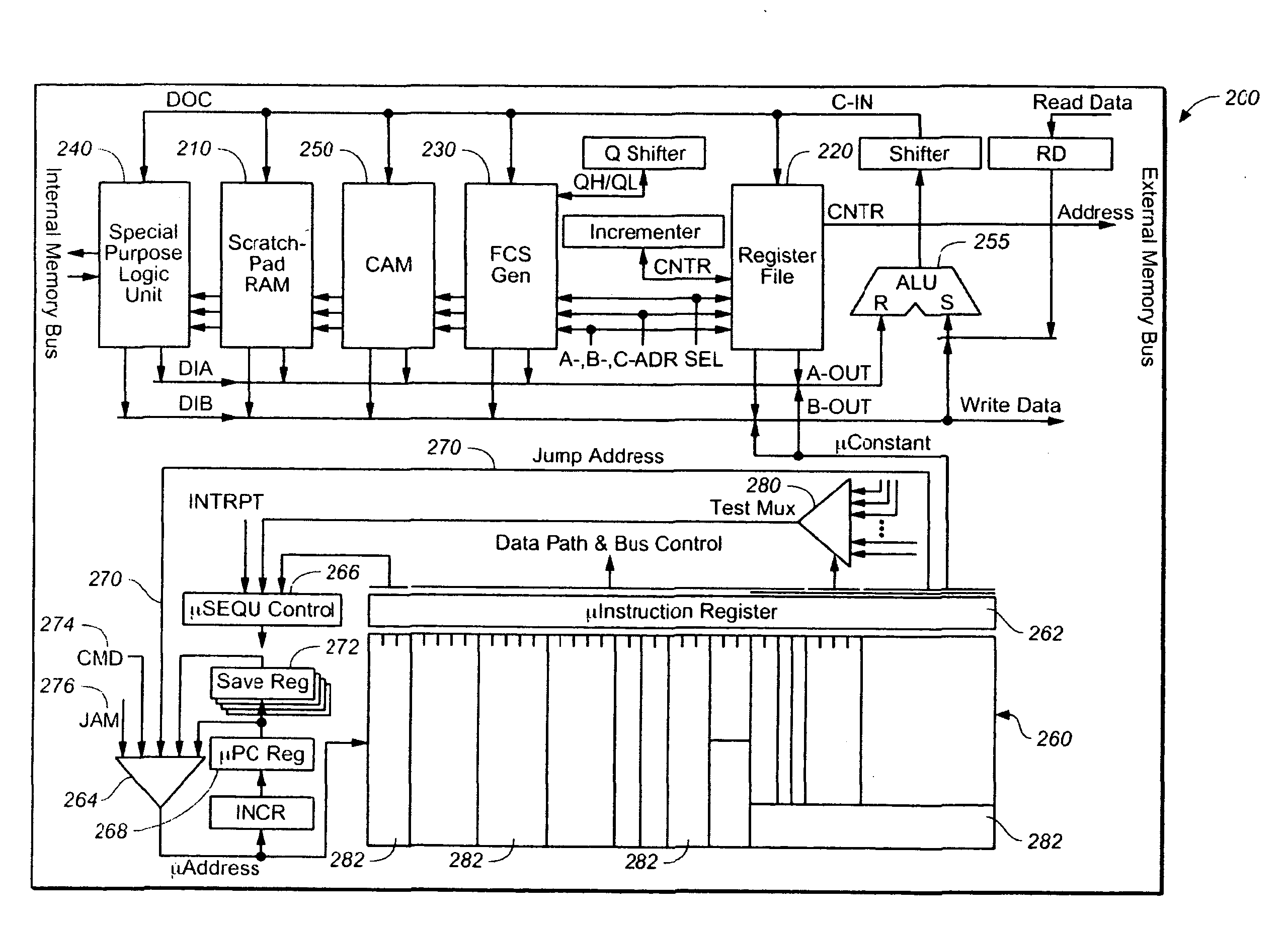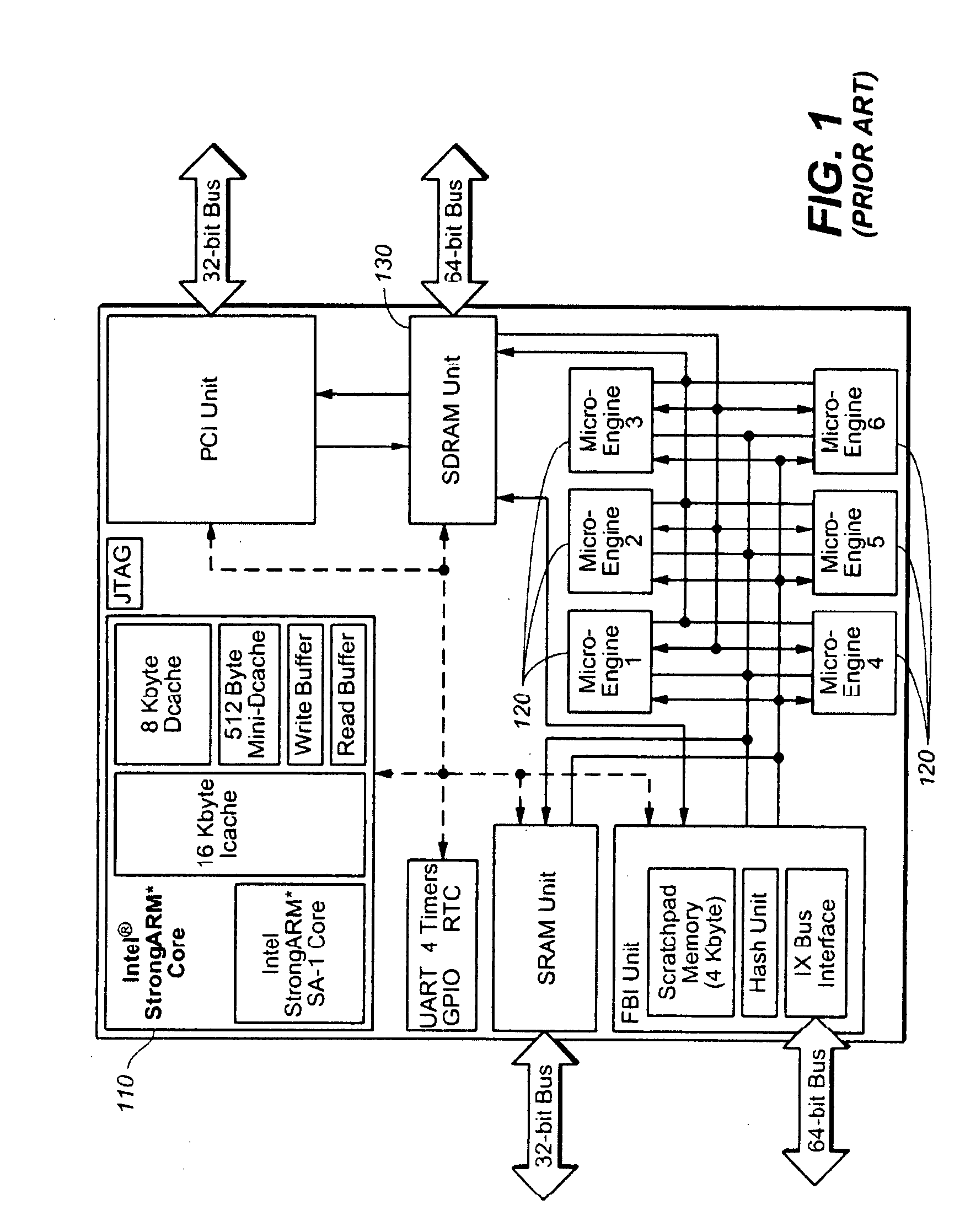Energy efficient processing device
a processing device and energy-saving technology, applied in the field of processing devices, can solve the problems of increasing the latency of the execution of instructions, the complexity of the iapx architecture, and the inability to perform more complex features in several processor cycles, and achieves the effects of low power consumption, fast performance, and small footprin
- Summary
- Abstract
- Description
- Claims
- Application Information
AI Technical Summary
Benefits of technology
Problems solved by technology
Method used
Image
Examples
Embodiment Construction
[0032]FIG. 1 is a schematic of a prior art network processor, the Intel IXP1200. This prior art network processor utilizes numerous opcodes in its microarchitecture. The Intel IXP network processor family is a microcoded processor family, where each processor has a relatively small microcode memory (thousands of lines of microcode). The microcode may be fixed (ROM) or variable (RAM), but is typically configured in some initialization phase, and remains in place for the duration of the computing mission. An Intel StrongARM Core 110 is a control unit that performs logical operations and several microengines 120 that may be cores from the StrongARM family provide switching, with on-board SRAM 130. In a programmable microprocessor, the complete macroinstruction is executed by generating an appropriately timed sequence of groups of control signals, with the execution termed the microoperation.
[0033]While the microoperations in the Intel IXP are ultimately implemented by hardware, they ar...
PUM
 Login to View More
Login to View More Abstract
Description
Claims
Application Information
 Login to View More
Login to View More - R&D
- Intellectual Property
- Life Sciences
- Materials
- Tech Scout
- Unparalleled Data Quality
- Higher Quality Content
- 60% Fewer Hallucinations
Browse by: Latest US Patents, China's latest patents, Technical Efficacy Thesaurus, Application Domain, Technology Topic, Popular Technical Reports.
© 2025 PatSnap. All rights reserved.Legal|Privacy policy|Modern Slavery Act Transparency Statement|Sitemap|About US| Contact US: help@patsnap.com



